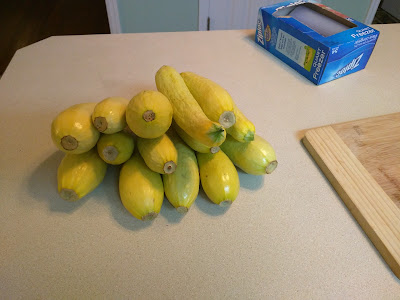In the fall, someone gave us a couple milkweed plants with monarch caterpillars already on them, so we planted these in our flower garden. The caterpillars ended up eating every leaf on the plants and then disappeared. I'm not sure if they were eaten by predators or the caterpillars just left to find a place to create their chrysalis. Since then, the milkweed survived the winter and has grown back very strong. Yellow blooms have filled our garden and now seed pods are hanging from the milkweed. These are very healthy and pretty plants but I haven't seen a caterpillar since the fall. Do we have the right milkweed species?
Which species of milkweed do we have?
Here are some pictures of the milkweed growing in our garden:
Older picture showing off the leaves
Yellowish orange blooms
Notice the seed pods
My first thought was that these plants were Asclepias tuberosa or commonly called butterfly milkweed, but after some research I found that the flowers and leaves were very different.
Then I saw a milkweed for sale at Lowes that looked very similar to what I have growing. Asclepias curassavica, or scarlet milkweed, which is native to South America but has become naturalized in Florida. While looking up scarlet milkweed, most pictures show the flowers being a red color, but I have found out that there is a yellow flowering variety that looks very much like the type of milkweed I have growing.
Well, I found that the milkweed in my garden isn't a native and is in fact, Scarlet Milkweed (Asclepias curassavica). These plants will still attract pollinators and look nice, so I plan on keeping them around, although I won't be worried if they are killed off by a frost.
While researching, I did find an excellent website by Sharon LaPlante called Milkweeds Native to Florida. She lists 21 native milkweeds growing in Florida. You can read her website here: Milkweeds Native to Florida
Butterfly Heroes
About a month ago, Olivia submitted the picture below on the Butterfly Heroes website and we recently received a butterfly packet in the mail that included seeds for Asclepias tuberosa (butterfly milkweed)!!! Now we can start growing our native milkweed!
She made the butterfly pledge!
This is only the beginning of growing different native milkweed species in my yard!





















